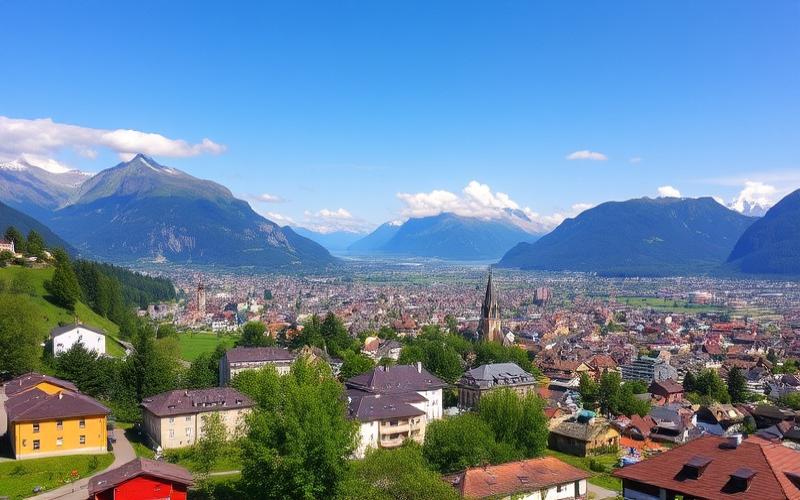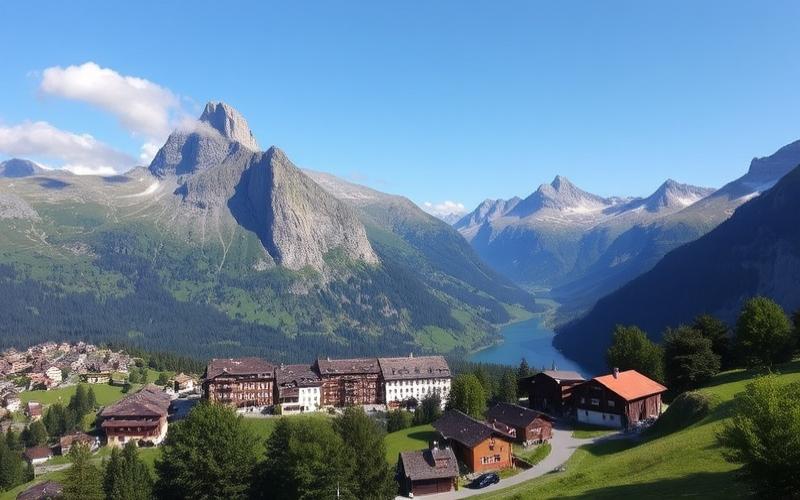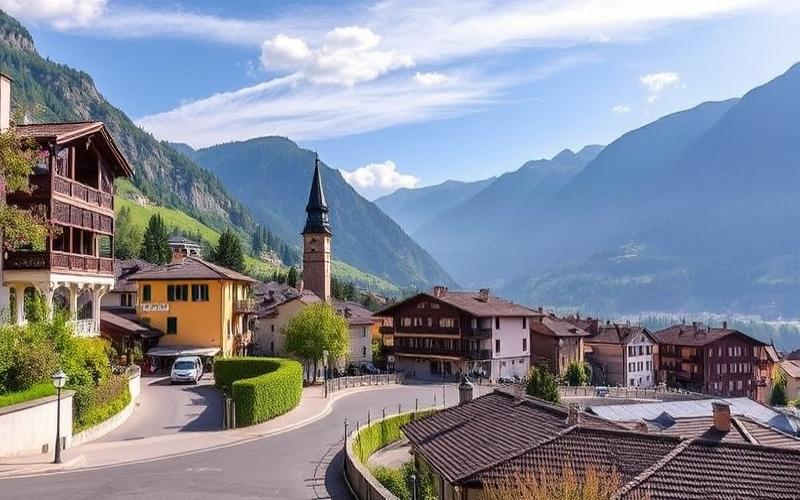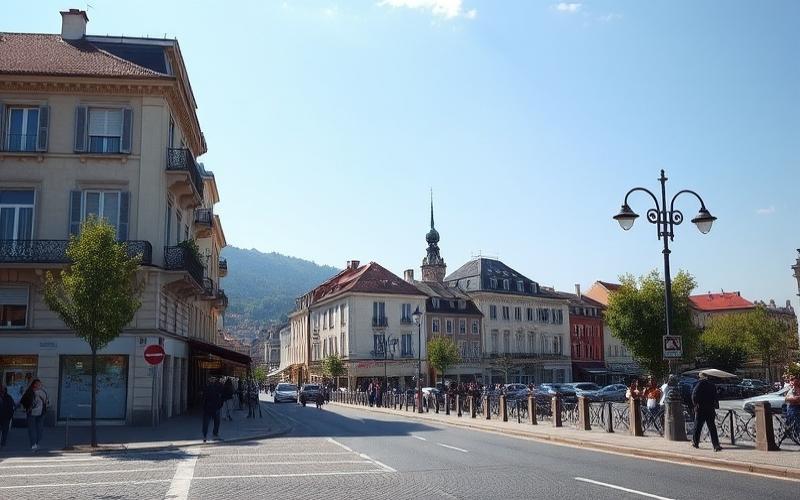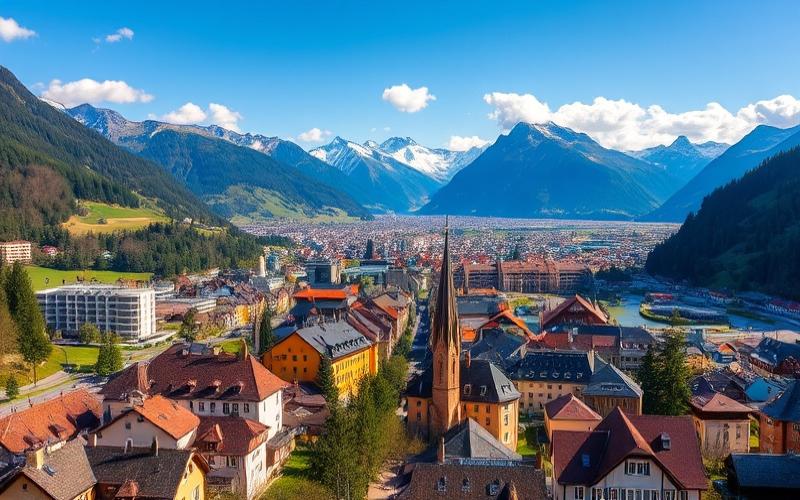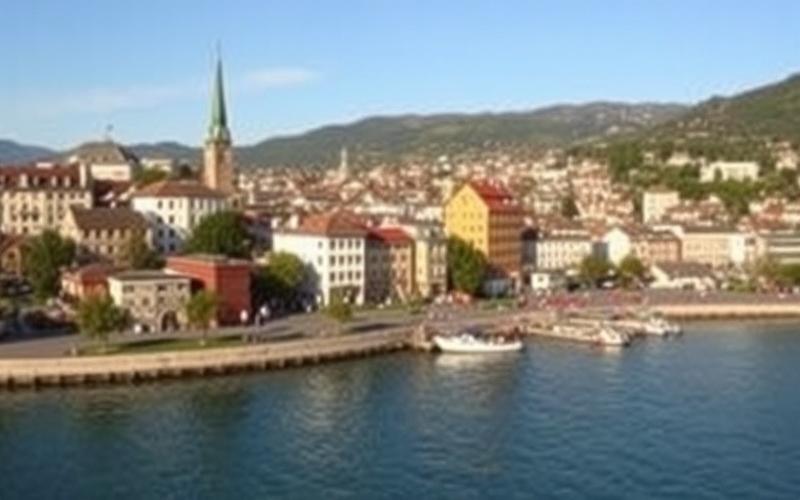
 Published on and written by Cyril Jarnias
Published on and written by Cyril Jarnias
While Switzerland is often synonymous with economic stability, some of its cities are preparing for soaring prices by 2030, revealing a fascinating dynamic that blends urban development, attractiveness, and market pressures.
In this article, we will explore the key factors contributing to this dramatic increase, reveal the most affected areas, and discuss the implications for residents and investors.
Readers will discover how these Swiss cities are transforming into hubs of expertise and innovation, while managing the challenges associated with this exponential growth.
Analysis of Swiss Cities with Expected Price Increases
The Swiss cities showing significant projected real estate price increases by 2030 are primarily major urban centers such as Zurich, Geneva, Basel, and Lausanne. Several industry reports highlight the expected acceleration in price growth in these cities due to demographic, economic, and structural factors.
Summary Table of Cities with High Projected Increases
| City | Projected Increase | Key Factors |
|---|---|---|
| Zurich | High | Immigration, foreign investment, jobs |
| Geneva | High | High demand, quality of life, international proximity |
| Basel | Moderate to High | Infrastructure projects, pharmaceutical sector |
| Lausanne | Moderate to High | Attractive universities, modern infrastructure |
Current Real Estate Market Trends
- Homeownership prices continue to rise: +2.4% year-over-year in the last quarter of 2024.
- Single-family homes saw their prices increase by an average of 1.1% over the year.
- Condominium apartments recorded a higher increase (+2.3%), indicating stronger pressure in this segment.
- The Swiss Residential Property Price Index (IMPI) reached its highest level since its creation.
Factors Driving the Increase
Rapid population growth, with projections reaching ten million inhabitants before 2030; this growth is driven by skilled economic immigration.
Sustained foreign investment, particularly in urban centers and premium properties.
Major infrastructure projects (modernized public transport, new mixed-use neighborhoods), enhancing urban attractiveness.
Globally recognized quality of life for Zurich and Geneva: enhanced security, clean environment, and efficient public services.
Economic Forecasts & Expert Opinions
According to UBS and several real estate analysts:
“In the coming years…rents are expected to increase faster than incomes. Rents charged by landlords could increase by 25 to 30% in real francs by the mid-2030s.”
This dynamic will be particularly pronounced in “major centers” where demographic pressure is concentrated.
Potential Impacts on Residents & Local Economy
List of main impacts:
- Reduced access to homeownership for young local households
- Increase in overall housing costs for all social categories
- Possible strengthening of commuting (living far from workplace)
- Potential increase in social inequalities between city centers and suburbs
- Expected positive effect on the local construction/real estate sector due to new investments
In summary:
The combination of sustained immigration, global economic attractiveness—particularly for Zurich and Geneva—along with the continuous development of major infrastructure explains why these Swiss metropolitan areas are expected to experience some of the most significant national real estate increases until 2030.
Good to know:
Swiss cities like Zurich, Geneva, and Lausanne are already recording notable price increases, expected to continue until 2030, driven by strong demand and growing foreign investment. Major infrastructure projects, such as the Léman Express, boost regional attractiveness while the exceptional quality of life in these cities attracts new residents, exacerbating pressure on the real estate market. Industry experts, relying on recent reports, estimate that these trends will lead to a continuous increase in prices, impacting the cost of living and highlighting a potential scarcity of affordable housing. The economic weight of these increases is already influencing local administration, prompting increased urban planning to balance supply and demand.
Long-Term Real Estate Investment Opportunities in Switzerland
The Swiss real estate market appeals to long-term investors due to the country’s economic and political stability, predictable taxation, and a strong banking sector. This stability reduces exposure to external shocks and reassures investors about preserving their asset value.
Among the factors that make certain Swiss cities particularly attractive for long-term real estate investment:
- High quality of life: security, healthy environment, modern infrastructure
- Excellent connectivity (efficient public transport)
- Economic dynamism with a strong presence of international companies
- Sustained growth of urban populations expected by 2030, stimulating residential demand
The following cities stand out for their attractiveness:
| City | Main Assets | 2025 Price Forecasts |
|---|---|---|
| Zurich | International financial center, strong demographic growth | Expected increase between +2% and +4% for single-family homes; +2% to +3% for apartments |
| Geneva | Headquarters of international organizations, dynamic rental market | Similar increase expected |
| Lausanne | University and technology hub | Prices progressing |
| Basel | Developed pharmaceutical industry | Sustained demand |
Central neighborhoods or those near train stations often benefit from higher appreciation due to local dynamism and urban projects. The maintenance of an imbalance between limited supply (due to land constraints) and growing demand also helps support prices.
Forecasts until 2025 show that the Swiss market should continue its rise:
- Single-family homes: +2% to +4%
- Condominium apartments: +2% to +3%
This is explained in particular by the prospect of a further reduction in the key interest rate by the Swiss National Bank (SNB), making credit more attractive while maintaining strong pressure on available supply.
Recommended strategies to maximize returns while controlling risk:
- Geographic diversification: invest in several cities or regions to spread risk.
- Focus on well-located properties (near city centers, public transport routes).
- Acquisition of properties intended for long-term rental in tight markets.
- Gradual investment, allowing adjustment according to regulatory or economic developments.
Note that local regulations are strict: increased tenant protection, restrictions on certain purchases by non-residents (“Lex Koller”), variable cantonal real estate taxation. Regular monitoring is essential to remain compliant with legislative changes.
Investing in Swiss real estate therefore remains a robust strategic choice for the long term thanks to the unique stability-security combination offered by this market coupled with positive prospects regarding urban demographic evolution and real estate price trends.
Good to know:
The appeal of long-term real estate investment in Switzerland lies in the country’s economic and political stability, offering valuable security to investors. Certain cities like Zurich, Geneva, and Lausanne will particularly benefit from price increases by 2030, thanks to a high quality of life, robust infrastructure, and attractive economic dynamism. Zurich, for example, attracts for its role as a financial hub while Geneva appeals due to its international status. The anticipation of urban population growth enhances demand, making these cities ideal for investment. Winning investment strategies include purchasing properties in developing areas, thus optimizing returns while monitoring local zoning and tax regulations. Investing here also means benefiting from Swiss construction quality, often highly sought after for its durability. Adopting a diversified strategy, combining residential and commercial buildings, could offer a balance between potential gains and maintaining risk at an acceptable level.
Growth Factors of Urban Areas by 2030
The main factors influencing the growth of urban areas in Switzerland by 2030 are multiple and interdependent.
Major Socio-Economic Factors:
- Sustained demographic growth, fueled by natural population increase and strong migratory attractiveness. Some cities like Lausanne anticipate the arrival of tens of thousands of new residents, generating pressure on the housing market and public infrastructure.
- Increased investment in infrastructure to meet these needs: creation of housing, development of public facilities, adaptation of urban services.
- Urban policies favoring both controlled expansion (densification) and quality of living environment. Municipalities seek to reconcile economic development with the preservation of natural or agricultural spaces.
Mobility and Networks
Increased deployment of public transport networks to support urban expansion, reduce traffic congestion, and promote soft mobility (pedestrians, cyclists).
Modernization of existing infrastructure to improve energy efficiency while meeting growing demands related to the urban population.
Internal and International Migration
Migration plays an essential role in Swiss demographic dynamism: internal migratory flows towards large agglomerations as well as international immigration that further reinforces this trend.
| Factor | Main Impact on Urbanization |
|---|---|
| Demographic growth | Increased pressure on housing/infrastructure |
| Internal & external migration | Socio-cultural diversification & rapid expansion |
| Infrastructure investments | Extension/transformation of urban fabric |
Energy Transition & Environmental Sustainability
Priority given to initiatives to limit environmental impact: transition towards renewable energies, improvement of energy efficiency in new or renovated buildings.
Multiplication of green initiatives: creation/expansion of green spaces, ecological corridors integrated into existing or future urban fabric.
Land Use Regulations
Introduction/regular review of regulations aimed at more efficient land use to avoid uncontrolled sprawl while ensuring qualitative densification around strategic hubs.
Digitalization & Technological Innovations
Generalization of digital technology in urban management: territorial planning assisted by geospatial data/artificial intelligence; intelligent traffic optimization; digital platforms to facilitate citizen dialogue during urban planning projects.
Synthetic List of Key Levers:
- Continuous population increase
- Strengthening/massive upgrading of public transport
- New land policies focused on density/spatial sobriety
- Emphasis on sustainability/ecological transition (low-energy buildings)
- Increased digitalization serving a smart city
The interplay between these different factors will strongly condition not only the pace but also the overall quality of Swiss urban development until 2030.
These dynamics will require flexible governance capable of both supporting and framing this growth to ensure social cohesion, environmental resilience, and economic competitiveness.
Good to know:
Urban areas in Switzerland are expected to experience notable growth by 2030 thanks to several key factors. Population increase, both through internal and international migration, stimulates demand for more housing and infrastructure. Urban policies focused on sustainable expansion facilitate the integration of massive infrastructure projects, such as the expansion of transport networks. Meanwhile, initiatives favoring the energy transition push cities to adopt more sustainable practices, influencing land use with stricter regulations and ecological urbanization projects. Digitalization and technological innovation also play a central role in reshaping the needs and management of urban spaces, making their development more efficient. These combined factors create a dynamic conducive to the rise in real estate prices, accentuated by the economic and social attractiveness of these emerging urban areas.
Disclaimer: The information provided on this website is for informational purposes only and does not constitute financial, legal, or professional advice. We encourage you to consult qualified experts before making any investment, real estate, or expatriation decisions. Although we strive to maintain up-to-date and accurate information, we do not guarantee the completeness, accuracy, or timeliness of the proposed content. As investment and expatriation involve risks, we disclaim any liability for potential losses or damages arising from the use of this site. Your use of this site confirms your acceptance of these terms and your understanding of the associated risks.












